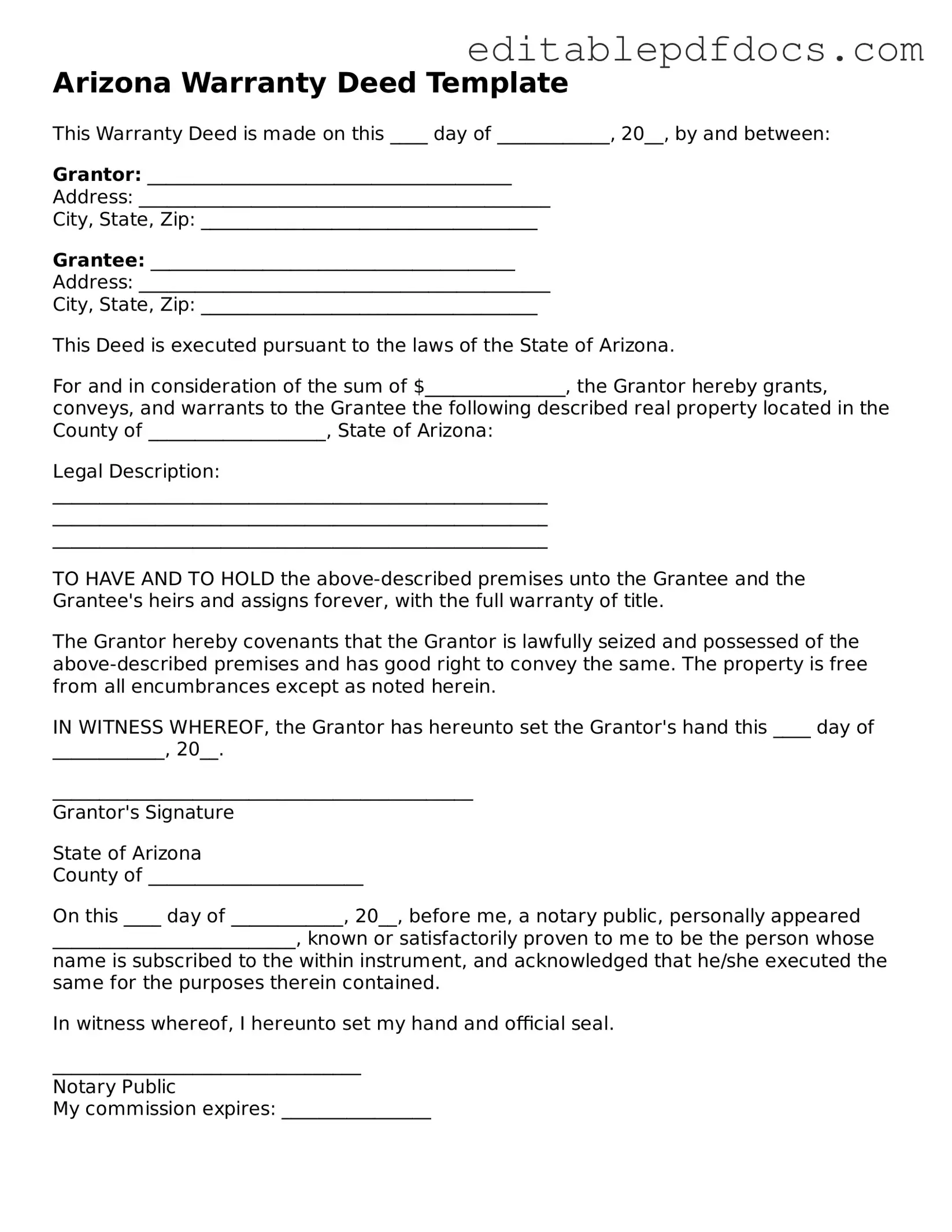When navigating the complexities of property ownership in Arizona, understanding the Arizona Deed form is essential. This document serves as a crucial tool for transferring real estate from one party to another, ensuring that ownership rights are clearly defined and legally recognized. The form typically includes vital information such as the names of the parties involved, a detailed description of the property being transferred, and the signature of the grantor, which is the individual or entity conveying the property. Additionally, the Arizona Deed form may require notarization to validate the transaction, providing an extra layer of security and authenticity. Whether you are buying, selling, or gifting property, knowing the nuances of this form can help streamline the process and protect your interests. Understanding the different types of deeds available, such as warranty deeds and quitclaim deeds, also enhances your ability to make informed decisions. By familiarizing yourself with the Arizona Deed form, you empower yourself to engage confidently in real estate transactions, ensuring that your rights and responsibilities are clearly articulated and upheld.
